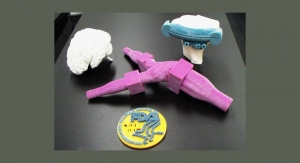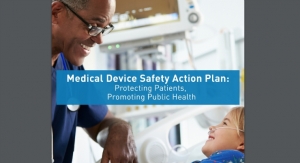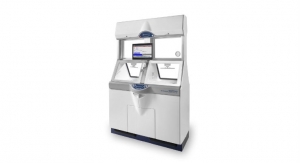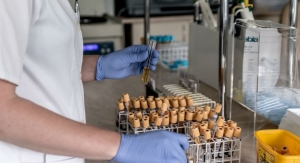David C. Robson, Principal, Robson Advisors05.03.18
For simple or well-characterized medical products, it is risk-appropriate and most cost effective to immediately design and engineer the commercial configuration of the device. In these cases, the design would presumably be sufficiently “locked in,” meaning the potential for substantial oversights is virtually nil. The OEM management team could therefore decide the product could be designed to go straight into commercial manufacturing, without any interim product configurations.
But for more complex medical devices, the company should seriously consider developing a “clinical-grade” product configuration before spending the time and money refining the myriad facets of a “commercial-grade” design. This is especially true for devices that introduce novel clinical treatments or new-to-industry functionality, or those that have not yet settled on specific treatment parameters or functional tolerance ranges.
Whereas a commercial-grade design should satisfy all the requirements for a product to be successful (e.g., safety, effectiveness, profit margin, etc.), a clinical-grade design primarily focuses on proving the clinical function is reliable. This focus allows the sponsoring company to postpone some secondary items for later. Generally, the design will include the key components that are intended as part of the commercial solution but the design will not have been fully streamlined.
Below are some of the reasons developing a clinical-grade or interim product configuration can be beneficial. For each of these reasons, a proper balance is required to determine how much work can be wisely postponed. Also, any components and configurations should be close approximations to the eventual commercial solution.
Less focus on cost of goods and profit margin objectives. It goes without saying that cost of goods and resulting profit margin are critical objectives for a commercially successful product. However, tuning a product design to hit a cost model is a big undertaking. It requires consideration of part count reduction, alternate component materials or fabrication methods, streamlining of manufacturing procedures, and so on. The clinical-grade design often aims to answer foundational questions concerning how the product functions or what clinical treatment ranges will be required—cost engineering can be left for later.
Less focus on the device’s physical size. A clinical-grade design can often relax some of the size requirements, as long as the product’s size doesn’t negatively impact the effectiveness of the device. Like the postponement of cost of goods optimization, the miniaturization process should only be pursued once the foundational functions and clinical success of the product have been confirmed.
Less focus on some aspects of functionality and human factors. Most products have primary or foundational functions. These are the elements that need to be fully embodied and confirmed in the clinical-grade approach. Secondary items and some of the refined human factors considerations can often be postponed unless there is uncertainty about their acceptability. For instance, a solution ultimately intended for handheld use may not be as lightweight or as easy to grasp in the clinical-grade design.
Secondary software functions can be postponed. Many medical devices employ sophisticated sensing and analysis tools to determine something. These are the critical-to-success items that the clinical-grade solution should focus upon, whereas non-critical functions should be held for later. Likewise, figuring out exactly how the screens navigate to secondary screens—language selection, for example—is work that can wait for the commercial embodiment.
Prototype materials may be sufficient. Since a clinical-grade product is an interim stage in the development cycle, it may be justified to use prototype materials. Although they may be more expensive on a per unit basis and are often less durable, these materials can be acquired much faster and often with no capital investment.
The development team can construct units under reduced process controls. Getting a commercial-grade manufacturing line arranged is another large undertaking. The clinical-grade approach can allow the team to insert direct inspections into the assembly process that may not be acceptable in the longer term.
Sterilization validation could be postponed or reduced. Depending upon the product and the intended use of the clinical-grade design, it may be possible to use simplified and smaller scale sterilization methods which would otherwise be prohibitively expensive for a commercial production solution.
Less focus on some aspects of risk management and fool-proofing. For most clinical-grade evaluation efforts, testing is done under tighter and more controlled situations. Doctors and other users of the product can receive more training and oversight than would be possible for the eventual commercial release. This may allow for lower hazards analysis scoring, which in turn may simplify some of the safety features that need to be incorporated into the clinical-grade configuration.
The design can be purposely engineered to allow adjustments. Employing a clinical-grade approach can allow the development team to include adjustable features or functions that may be inappropriate or unwanted in the commercial solution. This can be very helpful when trying to perfect an uncertain set of human-machine interfaces or user experiences. Similarly, the ability to test different component designs or materials or collect extra data can be accommodated in the clinical-grade solution, where such adjustability would be too costly or clunky for the commercial version.
Results can support eventual regulatory submissions. There are limitations to what kind of data the FDA or the EU will accept from product testing not done on the final design. However, in some cases risk-appropriate rationales can be made that the clinical-grade solution is sufficiently similar and can be used to support eventual submissions.
In some cases, the clinical-grade solution could be the first commercial offering. If the device offers a novel treatment or has a strong clinical advantage over competitive solutions, there will be early adopters who will want to use it—even if it’s a little clunkier or doesn’t have a fully refined feature set. While the clinical-grade solution will not be as cost-effective as the eventual commercial solution, it could be designed and submitted for regulatory approval such that it can be offered for sale. This then gives the developing company real-world information and feedback, which can be incorporated into the larger scale commercial solution.
It’s important to remember that converting the clinical-grade design to the commercial-grade solution should be evolutionary, not revolutionary. Many management teams of old will balk at the idea of “developing the product twice.” They may see the clinical-grade solution as an unnecessary half measure. They want the development team to develop the right product first without any mistakes. However, for complex medical systems, going straight to the commercial design increases the risk of including an “Achilles heel” in the design or misaligning the cost-function-quality balance.
An Achilles heel in terms of a product design is an issue or error that is fundamental to the product and cannot be “designed out.” An Achilles heel issue can permanently destroy a new product line and its revenue potential. It’s much better to discover these types of problems early in the development cycle, so the team can adjust the design or, if need be, kill the project.
The commercial solution is ideally a “tailored” version of the clinical design. Parts can be refined for injection molding and other mass production processes. The secondary control screens and software control can be added. Final verification and validation testing can then be pursued.
If done correctly, the clinical device will have answered all the hard questions and helped to determine the exact functional ranges and tolerances. Further, the clinical solution will reveal design and durability flaws that would have been discovered during the design verification testing of the commercial configuration.
The overall project schedule of including development of a clinical-grade solution may have a longer timeline, but the risk profile will be better controlled. Anyone that has been developing medical devices for a while knows the suffering that occurs when a product experiences a drastic “excursion” from the project plan. It can drain the life out the project team and put companies out of business.
David C. Robson, a principal at Robson Advisors, has spent 30 years concentrating on the development of medical devices. Seventeen of those years were spent working for a full-service product development firm where he interacted with both large and small medical device companies and reviewed statements of work and requests for quotation, wrote proposals, and negotiated hundreds of work agreements. Robson and his partners now offer product development guidance and advocacy to early-stage medical device clients.
But for more complex medical devices, the company should seriously consider developing a “clinical-grade” product configuration before spending the time and money refining the myriad facets of a “commercial-grade” design. This is especially true for devices that introduce novel clinical treatments or new-to-industry functionality, or those that have not yet settled on specific treatment parameters or functional tolerance ranges.
Whereas a commercial-grade design should satisfy all the requirements for a product to be successful (e.g., safety, effectiveness, profit margin, etc.), a clinical-grade design primarily focuses on proving the clinical function is reliable. This focus allows the sponsoring company to postpone some secondary items for later. Generally, the design will include the key components that are intended as part of the commercial solution but the design will not have been fully streamlined.
Below are some of the reasons developing a clinical-grade or interim product configuration can be beneficial. For each of these reasons, a proper balance is required to determine how much work can be wisely postponed. Also, any components and configurations should be close approximations to the eventual commercial solution.
Less focus on cost of goods and profit margin objectives. It goes without saying that cost of goods and resulting profit margin are critical objectives for a commercially successful product. However, tuning a product design to hit a cost model is a big undertaking. It requires consideration of part count reduction, alternate component materials or fabrication methods, streamlining of manufacturing procedures, and so on. The clinical-grade design often aims to answer foundational questions concerning how the product functions or what clinical treatment ranges will be required—cost engineering can be left for later.
Less focus on the device’s physical size. A clinical-grade design can often relax some of the size requirements, as long as the product’s size doesn’t negatively impact the effectiveness of the device. Like the postponement of cost of goods optimization, the miniaturization process should only be pursued once the foundational functions and clinical success of the product have been confirmed.
Less focus on some aspects of functionality and human factors. Most products have primary or foundational functions. These are the elements that need to be fully embodied and confirmed in the clinical-grade approach. Secondary items and some of the refined human factors considerations can often be postponed unless there is uncertainty about their acceptability. For instance, a solution ultimately intended for handheld use may not be as lightweight or as easy to grasp in the clinical-grade design.
Secondary software functions can be postponed. Many medical devices employ sophisticated sensing and analysis tools to determine something. These are the critical-to-success items that the clinical-grade solution should focus upon, whereas non-critical functions should be held for later. Likewise, figuring out exactly how the screens navigate to secondary screens—language selection, for example—is work that can wait for the commercial embodiment.
Prototype materials may be sufficient. Since a clinical-grade product is an interim stage in the development cycle, it may be justified to use prototype materials. Although they may be more expensive on a per unit basis and are often less durable, these materials can be acquired much faster and often with no capital investment.
The development team can construct units under reduced process controls. Getting a commercial-grade manufacturing line arranged is another large undertaking. The clinical-grade approach can allow the team to insert direct inspections into the assembly process that may not be acceptable in the longer term.
Sterilization validation could be postponed or reduced. Depending upon the product and the intended use of the clinical-grade design, it may be possible to use simplified and smaller scale sterilization methods which would otherwise be prohibitively expensive for a commercial production solution.
Less focus on some aspects of risk management and fool-proofing. For most clinical-grade evaluation efforts, testing is done under tighter and more controlled situations. Doctors and other users of the product can receive more training and oversight than would be possible for the eventual commercial release. This may allow for lower hazards analysis scoring, which in turn may simplify some of the safety features that need to be incorporated into the clinical-grade configuration.
The design can be purposely engineered to allow adjustments. Employing a clinical-grade approach can allow the development team to include adjustable features or functions that may be inappropriate or unwanted in the commercial solution. This can be very helpful when trying to perfect an uncertain set of human-machine interfaces or user experiences. Similarly, the ability to test different component designs or materials or collect extra data can be accommodated in the clinical-grade solution, where such adjustability would be too costly or clunky for the commercial version.
Results can support eventual regulatory submissions. There are limitations to what kind of data the FDA or the EU will accept from product testing not done on the final design. However, in some cases risk-appropriate rationales can be made that the clinical-grade solution is sufficiently similar and can be used to support eventual submissions.
In some cases, the clinical-grade solution could be the first commercial offering. If the device offers a novel treatment or has a strong clinical advantage over competitive solutions, there will be early adopters who will want to use it—even if it’s a little clunkier or doesn’t have a fully refined feature set. While the clinical-grade solution will not be as cost-effective as the eventual commercial solution, it could be designed and submitted for regulatory approval such that it can be offered for sale. This then gives the developing company real-world information and feedback, which can be incorporated into the larger scale commercial solution.
It’s important to remember that converting the clinical-grade design to the commercial-grade solution should be evolutionary, not revolutionary. Many management teams of old will balk at the idea of “developing the product twice.” They may see the clinical-grade solution as an unnecessary half measure. They want the development team to develop the right product first without any mistakes. However, for complex medical systems, going straight to the commercial design increases the risk of including an “Achilles heel” in the design or misaligning the cost-function-quality balance.
An Achilles heel in terms of a product design is an issue or error that is fundamental to the product and cannot be “designed out.” An Achilles heel issue can permanently destroy a new product line and its revenue potential. It’s much better to discover these types of problems early in the development cycle, so the team can adjust the design or, if need be, kill the project.
The commercial solution is ideally a “tailored” version of the clinical design. Parts can be refined for injection molding and other mass production processes. The secondary control screens and software control can be added. Final verification and validation testing can then be pursued.
If done correctly, the clinical device will have answered all the hard questions and helped to determine the exact functional ranges and tolerances. Further, the clinical solution will reveal design and durability flaws that would have been discovered during the design verification testing of the commercial configuration.
The overall project schedule of including development of a clinical-grade solution may have a longer timeline, but the risk profile will be better controlled. Anyone that has been developing medical devices for a while knows the suffering that occurs when a product experiences a drastic “excursion” from the project plan. It can drain the life out the project team and put companies out of business.
David C. Robson, a principal at Robson Advisors, has spent 30 years concentrating on the development of medical devices. Seventeen of those years were spent working for a full-service product development firm where he interacted with both large and small medical device companies and reviewed statements of work and requests for quotation, wrote proposals, and negotiated hundreds of work agreements. Robson and his partners now offer product development guidance and advocacy to early-stage medical device clients.




























